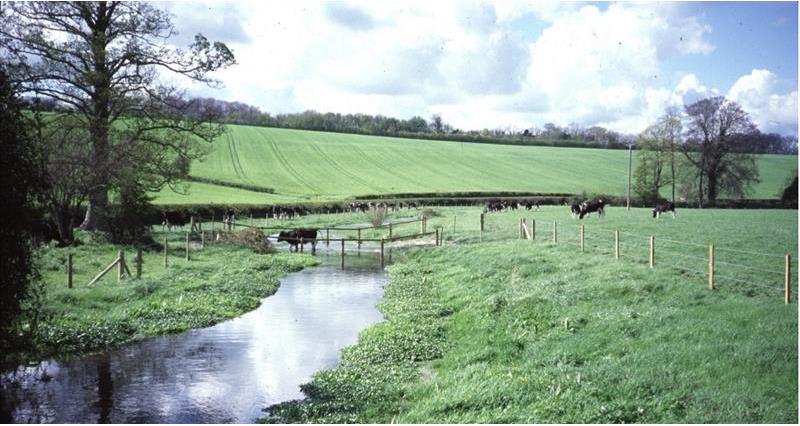What
Preventing access by fencing off watercourses is a simple solution to help reduce pollution and damage to banks by trampling and livestock access to rivers, streams, lakes, ponds, ditches and grips.
However, care should be taken when deciding where to fence off watercourses, as this can sometimes create new environmental problems. For example, ungrazed banks are more likely to develop problems with invasive problem plants, such as Himalayan balsam, and in some cases can result in excessive woody growth which can have detrimental impacts on some nationally important species (for example, water voles prefer tussocky grass margins).
Why
Heavy trampling by livestock can erode banks and increase inputs of sediment and organic matter into a watercourse. This can then reduce water quality by degrading freshwater habitats, fish spawning grounds and can lead to the contamination of bathing waters and drinking water supplies. Livestock can also damage sensitive riparian habitats from poaching and overgrazing along watercourses.
Therefore, the site of watercourse fencing needs to be carefully chosen on a case by case basis, by assessing the risks to the watercourse in relation to the timing of grazing, the grazing density, the habitat and the risk of invasive weeds.
How
Once the decision has been made to fence, there is no minimum or maximum distance that the fence needs to be from the watercourse. However, it is important to locate the fence on stable ground away from the immediate bank edge as this may be vulnerable to erosion. It is also worth considering that the fence is located at a suitable distance from the top of the bank to enable occasional mechanical control of vegetation – here a point of access may be needed.
Considerations
- Fencing should be avoided on sites of archaeological or historic importance. You should ensure you have any relevant consents such as Scheduled Monument consent from English Heritage before carrying out the work if fencing is needed in such circumstances. Visual intrusion and impacts on landscape character should also be considered in the construction and alignment of new fencing lines, particularly in designated landscapes or historic parkland.
- In wetland Sites of Special Scientific Interest (SSSI) and other priority habitat areas such as county wildlife sites, the grazing of ditch banks and riparian grazing marsh is often essential to maintain the ecological interest of the site. Natural England will not issue a consent for fencing on a designated site (SSSI etc) where this is considered detrimental to the conservation objectives.
- If you are fencing off streams and rivers within a floodplain, you may need temporary fencing which will only remain during the grazing season as permanent wire fencing can collect debris from flooding and can result in the collapse of the fence.
- The Environment Agency must be consulted on all fencing along designated ‘main river’ locations as consent may be needed in these circumstances. If your land lies on the floodplain you will also need to talk to your local Internal Drainage Board office before erecting any permanent fencing.
- Barbed wire must not be used where fencing runs alongside Public Rights of Way, unless this is unavoidable.
- Where new permanent fences are added to a field, you may have to re-map your field with the RPA in order to be eligible for your Basic Payment Scheme. This will depend on how far away from the RLR boundary the new fencing takes place and the size (ha) of this newly fenced area – please see the relevant Basic Payment Scheme Handbook for full details.
- Further advice about when and where to locate a watercourse fence can be gained from your local CFE coordinator.
- External advice and in some cases grant assistance can be gained from Catchment Sensitive Farming and the Rivers Trust for watercourse fencing and in some cases funding for a replacement water supply to the field.
